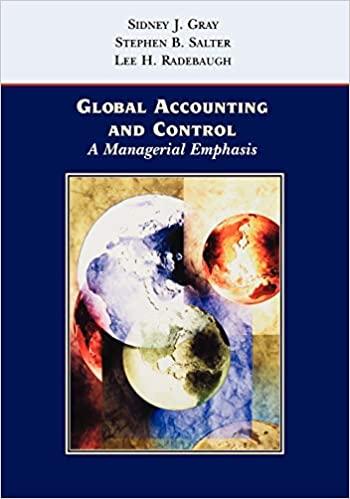Question
VERNON COMPANY Balance Sheets As of December 31 Year 4 Year 3 Assets Current assets Cash $ 24,500 $ 20,500 Marketable securities 21,700 7,700 Accounts
| VERNON COMPANY | |||||||
| Balance Sheets As of December 31 | |||||||
| Year 4 | Year 3 | ||||||
| Assets | |||||||
| Current assets | |||||||
| Cash | $ | 24,500 | $ | 20,500 | |||
| Marketable securities | 21,700 | 7,700 | |||||
| Accounts receivable (net) | 58,000 | 50,000 | |||||
| Inventories | 143,000 | 151,000 | |||||
| Prepaid items | 27,000 | 12,000 | |||||
| Total current assets | 274,200 | 241,200 | |||||
| Investments | 32,000 | 25,000 | |||||
| Plant (net) | 295,000 | 280,000 | |||||
| Land | 27,000 | 22,000 | |||||
| Total assets | $ | 628,200 | $ | 568,200 | |||
| Liabilities and Stockholders Equity | |||||||
| Liabilities | |||||||
| Current liabilities | |||||||
| Notes payable | $ | 35,200 | $ | 10,200 | |||
| Accounts payable | 103,800 | 90,000 | |||||
| Salaries payable | 26,000 | 20,000 | |||||
| Total current liabilities | 165,000 | 120,200 | |||||
| Noncurrent liabilities | |||||||
| Bonds payable | 150,000 | 150,000 | |||||
| Other | 32,000 | 27,000 | |||||
| Total noncurrent liabilities | 182,000 | 177,000 | |||||
| Total liabilities | 347,000 | 297,200 | |||||
| Stockholders equity | |||||||
| Preferred stock, (par value $10, 5% cumulative, non-participating; 7,000 shares authorized and issued) | 70,000 | 70,000 | |||||
| Common stock (no par; 50,000 shares authorized; 10,000 shares issued) | 70,000 | 70,000 | |||||
| Retained earnings | 141,200 | 131,000 | |||||
| Total stockholders equity | 281,200 | 271,000 | |||||
| Total liabilities and stockholders equity | $ | 628,200 | $ | 568,200 | |||
| VERNON COMPANY | |||||||
| Statements of Income and Retained Earnings For the Years Ended December 31 | |||||||
| Year 4 | Year 3 | ||||||
| Revenues | |||||||
| Sales (net) | $ | 400,000 | $ | 380,000 | |||
| Other revenues | 11,400 | 8,400 | |||||
| Total revenues | 411,400 | 388,400 | |||||
| Expenses | |||||||
| Cost of goods sold | 200,000 | 154,000 | |||||
| Selling, general, and administrative | 72,000 | 67,000 | |||||
| Interest expense | 13,100 | 12,300 | |||||
| Income tax expense | 108,000 | 107,000 | |||||
| Total expenses | 393,100 | 340,300 | |||||
| Net earnings (net income) | 18,300 | 48,100 | |||||
| Retained earnings, January 1 | 131,000 | 91,000 | |||||
| Less: Preferred stock dividends | 3,500 | 3,500 | |||||
| Common stock dividends | 4,600 | 4,600 | |||||
| Retained earnings, December 31 | $ | 141,200 | $ | 131,000 | |||
Required Calculate the following ratios for Year 4 and Year 3. a. Working capital. b. Current ratio. (Round your answers to 2 decimal places.) c. Quick ratio. (Round your answers to 2 decimal places.) d. Receivables turnover (beginning receivables at January 1, Year 3, were $51,000). (Round your answers to 2 decimal places.) e. Average days to collect accounts receivable. (Use 365 days in a year. Round your intermediate calculations to 2 decimal places and your final answers to the nearest whole number.) f. Inventory turnover (beginning inventory at January 1, Year 3, was $157,000). (Round your answers to 2 decimal places.) g. Number of days to sell inventory. (Use 365 days in a year. Round your intermediate calculations to 2 decimal places and your final answers to the nearest whole number.) h. Debt-to-assets ratio. (Round your answers to the nearest whole percent.) i. Debt-to-equity ratio. (Round your answers to 2 decimal places.) j. Number of times interest was earned. (Round your answers to 2 decimal places.) k. Plant assets to long-term debt. (Round your answers to 2 decimal places.) l. Net margin. (Round your answers to 2 decimal places.) m. Turnover of assets (average total assets in Year 3 is $568,200). (Round your answers to 2 decimal places.) n. Return on investment (average total assets in Year 3 is $568,200). (Round your answers to 2 decimal places.) o. Return on equity (average stockholders' equity in Year 3 is $271,000). (Round your answers to 2 decimal places.) p. Earnings per share (total shares outstanding is unchanged). (Round your answers to 2 decimal places.) q. Book value per share of common stock. (Round your answers to 2 decimal places.) r. Price-earnings ratio (market price per share: Year 3, $12.60; Year 4, $14.20). (Round your intermediate calculations and final answer to 2 decimal places.) s. Dividend yield on common stock. (Round your answers to 2 decimal places.)
Step by Step Solution
There are 3 Steps involved in it
Step: 1

Get Instant Access to Expert-Tailored Solutions
See step-by-step solutions with expert insights and AI powered tools for academic success
Step: 2

Step: 3

Ace Your Homework with AI
Get the answers you need in no time with our AI-driven, step-by-step assistance
Get Started


